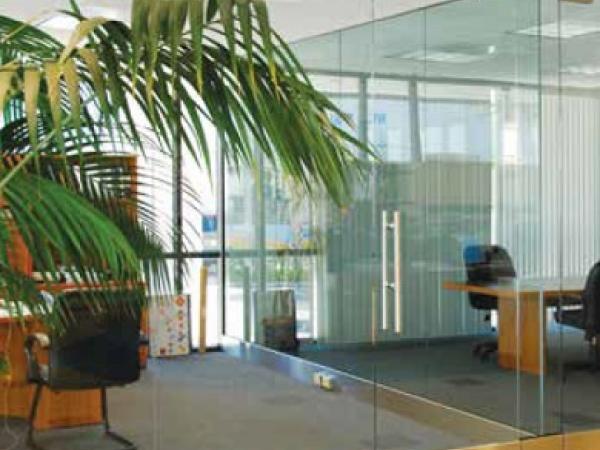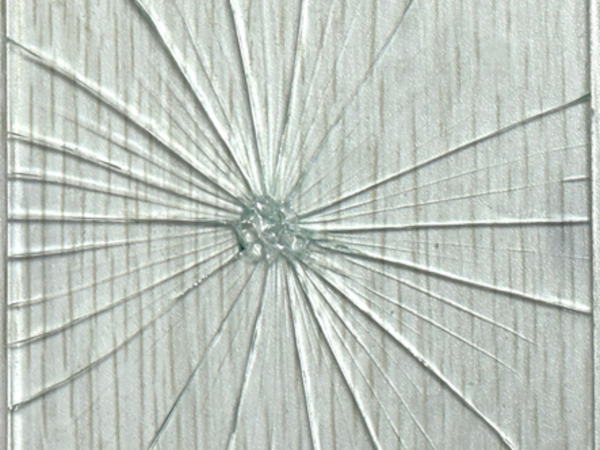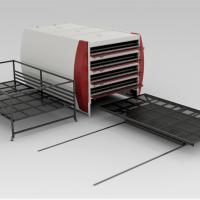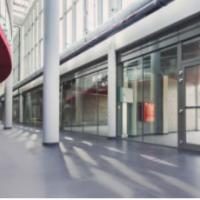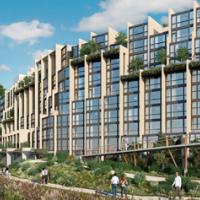Following the launch of Trosifol® Extra Strong (ES) we engaged some leading suppliers and consultants to discuss market issues and demands related to glazed solutions and the benefits that stiff PVB can offer the industry.
Glass has always been a popular material with architects and designers thanks to the aesthetic features it offers. This is especially true in modern architecture, where natural light flow, unobstructed views and infinity effects have become incredibly sought after in contemporary designs for both residential and commercial properties.
The historical issue with glass has been one of safety – especially concerning breakage in areas that are over head of people and property.
Laminated glass addresses the issue of glass particle retention after breakage, however, if the glass is minimally supported rather than fully framed on all sides, a flexible interlayer may not be sufficient to hold the entire panel in place if breakage occurs.
The use of stiff interlayers in structural glazing applications helps to minimize risk, while at the same time, delivers design benefits.
According to Jennifer Schneider, Structural & Security Glazing Segment Manager, Kuraray America Inc.:
“Stiff interlayers increase the strength of the glass structure by creating a coupling effect, which allows for higher loads with the same glass thickness or a reduction in glass thickness for the same loads.
Kuraray offers two stiff interlayers options, a stiff PVB and an Ionoplast interlayer, each having unique properties allowing more design freedom to architects and structural engineers.
New-generation stiffer interlayers, such as Trosifol® ES from Kuraray, have taken the safety performance characteristics of laminated glass even higher, offering architects and structural engineers much greater confidence in their capabilities – especially their superior post-breakage performance – by providing full structural properties up to 30 °C.”

It is for this reason that Trosifol® ES is becoming regarded as the interlayer of choice for interior open-edge applications, such as railings and balustrades and interior structural glazing applications, such as floors, stairs and partitions.
According to Andrew Chatfield, Director of Architectural Glass Systems & International Sales at Wagner: “From our perspective we are looking for structural integrity.
We are being pushed to offer increased performance based on IBC codes and the market is demanding glass that stays in place following a breakage event.
In the past there has only really been one alternative in terms of interlayer technologies, but stiff PVBs such as Trosifol® ES could definitely offer an alternative in applications below 30 °C.
“Even though we supply the metalwork for railing systems”, he continues, “we are still regularly asked about impact capabilities and deflection severity.
What we are seeing is that many applications in the US are starting to reference Florida’s building codes, specifically Miami Dade, due to its incorporation of hurricane resistance and performance. In this instance, the performance criteria are even greater and tougher to satisfy.”
Sanjeev Tankha, Principal and Director of the Enclosure Practice at Walter P. Moore, a leading engineering consultant, agrees with Chatfield: “We like stiffer PVB because of additional structural properties it offers opposed to standard PVB.
From a façade engineer's perspective, we see applications in long span lobby glass, tall cantilevered airport interior partitions, hand rails and other interior unsupported glass installations.
“The use of innovative and new products happens slowly in our industry and often relies on adoption of new technology in smaller projects,” he explains.
“Once you start seeing usage in the smaller stuff, the bigger projects pick it up and we start to see wider acceptance; this is also happening with stiff PVBs and I am sure we will see wider adoption as the market becomes more confident of its capabilities.
For us it’s a great product at a good price point and gives us what we want structurally. From a lamination perspective it comes in rolls, making the manufacturing process easier and giving us flexibility to scale up panel sizes.”
Danny Hull, Product Development Manager at FH Brundle in the UK discusses some of the design demands for which stiff PVB is becoming more attractive:
“The trend is to go for infinity effects that offer clearer views, with fewer handrails and posts. The problem is that these structures have to comply with legislation, they simply can’t have too much flexibility, so the designers and engineers either have to use thicker glass or better interlayers… with one eye on price too.
The issue with traditional PVB is that it is too flexible, so to counter the deflection you need thicker glass, which adds weight and additional complexity to the mounting solutions.
In this instance it becomes immediately apparent where a higher performing interlayer will address many concerns, without the weight issues and the higher cost penalties of going down other routes.”
Hull also talks about the other issue that can affect interlayers. “PVB layers can – over time and especially when exposed to the elements – delaminate and allow the ingress of moisture, so edge performance is another key criteria.
Yellowing and discoloration are also high on the list as the architects will not want their sweeping vistas tinged with Schneider addresses these discolouration issues. “Kuraray offers the broadest range of structural interlayers on the market, including SentryGlas® ionoplast interlayers.
Our products offer the best clarity compared with structural interlayers from other suppliers and are well suited when extra-clear glass is required. They are also much more resistant to the yellow tint that can be found in other interlayers and offer enhanced whiteness when combined with low-iron glass.”
For even greater peace of mind Trosifol® ES now comes with German DIBt approval as well as comfortably complying with German DIN 18008 (Part 6). Exhibiting strength and glass adhesion product characteristics surpassing those of standard PVB films, Trosifol® ES underwent exhaustive testing at the University of the German Armed Forces in Munich that was confirmed by the German Institute for construction Engineering (DIBt) in Berlin.
The DIBt went on to award Trosifol® ES general approval from the building authorities. As a result, laminates composed of glass/Trosifol® ES/glass now qualify as laminated safety glass according to the criteria of the German Lists of Construction Products, thus rendering time-consuming and costly approvals on a case-by-case basis superfluous.
Schneider concludes: “After a successful launch phase and testing, Trosifol® ES is now available globally and is already seeing application in some innovative and visually stunning internal applications.
We firmly believe that once people get first-hand experience of its structural capabilities, easier laminating, enhanced visual performance and longevity that it will see regular application in many high-profile architectural projects; like many of the other materials in our extensive range.”
Trosifol® is the global leader in PVB and ionoplast interlayers for laminated safety glass in the architectural segment. With the broadest product portfolio Trosifol® offers outstanding solutions:
- Structural: Trosifol® ES extra stiff PVB and SentryGlas® Ionoplast Interlayer
- Acoustic: Monolayer and Trilayer for Sound Insulation
- UV Control: UV Protection & Natural UV
- UltraClear: Lowest Yellowness Index in Industry
- Decorative and Design: Opaque black & white, colored & printed Interlayers
For more information Trosifol ES stiff PVB click here www.trosifol.de/en/produkte/architecture/trosifol-extra-strong-es/
You can find information on our Trosifol® products and services at www.trosifol.com


